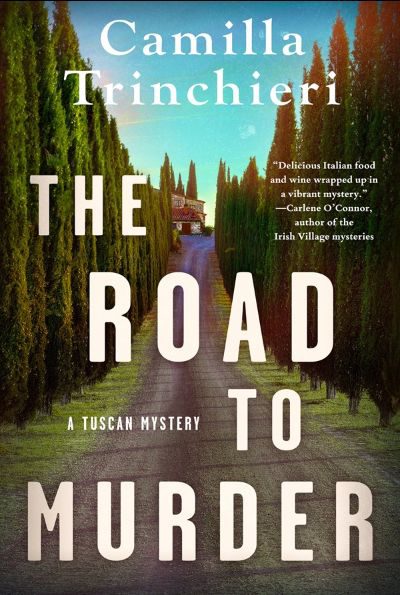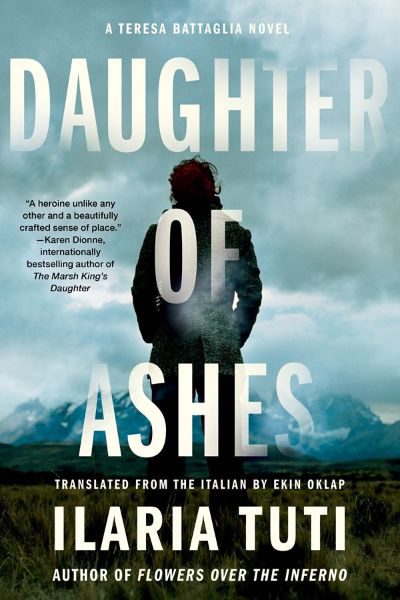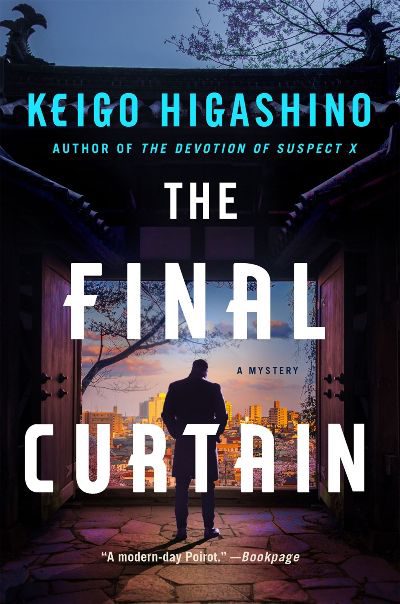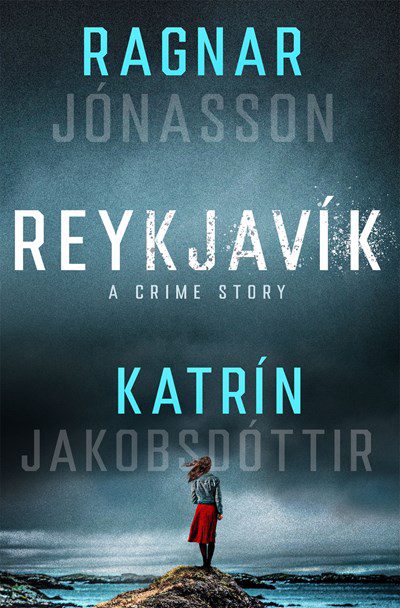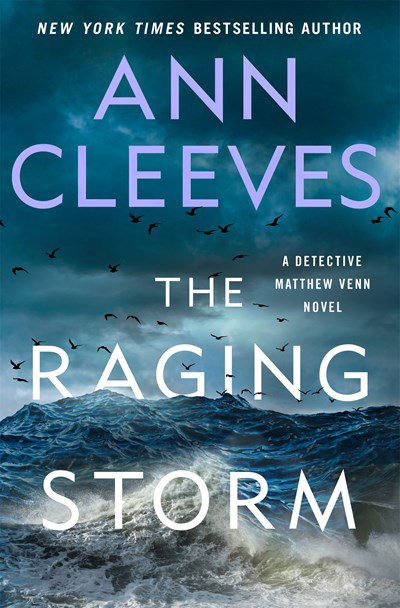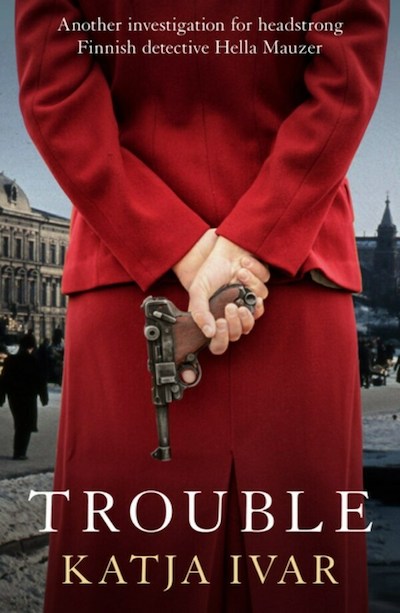Every flight headed to Italy should have on board a few dozen copies of Trinchieri’s mysteries—they are the perfect warm up to an Italian vacation, full of wry humor, eccentric characters, a gentle murder or two, plenty of excellent wine, and best of all a whole lot of Tuscan cooking. Ex-NYPD detective Nico Doyle moved to the small town of Gravigna after the death of his wife, a native, and he’s been embraced by the residents, even helping out in the kitchen of his in-laws’ ristorante (and getting great reviews). But he can’t leave his law enforcement years completely behind him, and he’s regularly summoned by Perillo, one of the local carabinieri, to help out on a case. Here, in the fourth installment, the murder victim is an older woman—owner of the handsome Villa Salviati—whose murder produces a bevy of possible suspects, including lovers, friends, and a couple of mean-spirited daughters. Will Nico and Perillo ever be able to return Gravigna back to more tranquil days? A delight from start to finish.
International
A deep, dark descent into one of Italy’s most disturbing true crimes, drawing on actual documents, news reports, and interviews to tell the story. Billed by the publisher as a “spellbinding literary thriller”—it’s certainly spellbinding, but no one’s definition of a thriller—this is a slow, methodical, layered journey into the murder of 23-year-old Luca Varani. The method? Torture. The perpetrators? Manuel Foffo, who confesses to his father, while driving to a family funeral, that he killed someone—three, four, five days ago?—he’s too drugged out to know. And Marco Prato, also from a “good family,” a nightclub promoter, gay and considering transitioning. Manuel and Marco barely know each other, although after several drug-and-alcohol fueled days holed up in Manuel’s apartment they develop an intimacy that’s somewhat sexual but more a twisted sort of friendship. “So-called psychic contagion, like a racing engine, brought the two young men close to the point of fusion.” What do they share, besides a love of drugs and alcohol? For starters, an inability to mature, jealousy of the rich, and complete irresponsibility. Lagioia intertwines the descent of Manuel and Marco with the descent of Rome itself—drug filled, rat-infested, garbage strewn, home to wild animals, yet ultimately, he claims, freeing. This story begs for comparison with the Nathan Leopold and Richard Loeb murder of Bobby Franks in 1924 Chicago. Brilliantly translated.
This is the final book in Tuti’s stunning and disturbing trilogy starring police detective Teresa Battaglia and set in the Dolomite mountains of northern Italy. Teresa has always been an extraordinary character, a woman who fought her way up the police ladder—while suffering the ridicule of her male peers—and at the same time found herself caught in an abusive marriage that nearly killed her. Now in her early sixties, she has slowly acknowledged that she has Alzheimer’s, and in this book we see it beginning to dominate her life. But just as she is about to retire, Teresa is brought back to work on a case featuring Giacomo Mainardi, a serial killer she confronted 27 years ago, whose mind she has come to understand and whose soul she has come to respect. While very much the tale of a serial killer, this final volume finds Teresa finally accepting the love and support of her colleagues, putting aside the “thick and steely…armor she wore every day,” and acknowledging that she has paved “the way for all the other women who would follow, and for anybody—regardless of their sex—who might be vulnerable to being victimized by people in position of power.” Best to read this brilliant series in order, beginning with Flowers over the Inferno.
Keigo Higashino makes the unbelievable become credible in this expansive novel that takes an extremely personal turn. After leaving her husband and son behind a decade ago, the mother of Tokyo Police Detective Kyoichiro Kaga lived out a quiet life in remote Sendai. Kaga only learned of her location after her death, and while sorting through her meager possessions and interviewing her one friend, he gains no answers to the many questions he has about his mother’s disappearance and life. Today, sixteen years later, Kaga is investigating the murder of Michiko Oshitani, a resident of Sendai who is found strangled to death in Tokyo—a place where she has no known connections. Why was Oshitani in Tokyo? With the help of his cousin, also a police detective, Kaga follows a series of twists and turns to finally arrive at a connection between Oshitani’s murder and the death of his mother that is absolutely staggering. Beautifully written and superbly translated, this is the concluding volume to a brilliant four-part series, and the plunge into Kaga’s personal life makes this title especially satisfying.
This strange, beautiful tale wedges readers into the crowded boats and alleys of Venice while whisking them along on a three-day romance with a Roman princess and the down-at-heel tour guide she falls for. The two seem to float above the city’s watery fray even before meeting. After meeting, they withdraw completely into their own emotional realm, “literally liquefied” by their fascination and passion for each other. Time is immaterial, they agree, as they find themselves “precariously suspended between being and non-being,” contemplate “intimate perplexities on who is who, where the I ends and the you begins,” and eat “a variety of little inventions.” The love story, which as the translator’s note explains, features more robustly in the book than the crime tale related to the princess’s work as an art dealer, soon provokes questions in the reader. Where is the tour guide from? Why must he leave Venice despite his grief over losing the love he has just stumbled upon? The answer to the mystery is startling and brings up many questions about the nature of life and how the past, and past injustices, can resonate today. Try this after Danielle Trussoni’s The Puzzle Master; you’ll come back to Earth eventually
A classic mystery from Katrín Jakobsdóttir, Iceland’s prime minister, and bestselling Icelandic crime writer Ragnar Jónasson. Back in 1956, a 14-year-old girl, Lara, disappeared without a trace at the end of the summer. She had been working as a maid for a well connected couple who spent summers on Videy, a remote island off the coast from Reykjavík. Eventually, Lara’s disappearance became Iceland’s most infamous unsolved case. On the 30th anniversary of the event, Valur Robertsson—a young, ambitious journalist—takes up the case, publishing a series of articles that imply he has new information, setting the nation on edge. But just when the public expects a revelation, the narrative takes a 180-degree spin, and the threat of violence becomes all too real. While it’s a well-done mystery, Reykjavík also provides tremendous insight into Iceland at a time of change, expasnion, and corruption. Sure to appeal to a broad swath of crime-fiction readers.
The third in the Two Rivers series has DI Matthew Venn and colleagues off to the tiny town of Greystone on the Devon coast. While much of Devon is popular as a vacation spot, Greystone’s color palette (gray, grayer, and grayest) combined with the dark, turbulent sea makes for a forbidding destination. To the locals’ delight, Greystone’s only celebrity, Jem Rosco, a famous sailor and adventurer, has returned. He spends his nights in the local pub, where he lets it be known that he’s back in town to meet up with someone special. A former lover? Perhaps. Except Rosco suddenly disappears before we find out, his body found naked, curled up in the bottom of a dinghy that’s anchored in a cove. A cove with a superstitious history. With her usual brilliance, Cleeves balances Venn and Co. as they spread out across the town seeking information while also drilling deeply into the lives of a handful of leading suspects. Personal tensions arise. Matthew’s team members compete with one another. Matthew himself is uncomfortable in Greystone, having spent part of his cult-ridden childhood in the town. And Jonathan, Matthew’s husband, has a secret he’s not ready to share. When this novel ends, it’s with a bang, not a whimper, sure to delight readers of what is one of the very best series being written today.
This first in a series, set in Italy’s magical Positano—that’s the much-photographed town on the Amalfi coast that’s clinging to a mountainside—promises plenty and delivers even more. Bria Bartolucci is a young widow intent on fulfilling her late husband’s dream of opening a B&B in Positano. And with help from her eight-year-old son, Marco; her best friend, Rosalie; sister; parents; Giovanni the handsome handyman; Bravo the dog; a nun; and several more characters, it looks like Bella Bella will open on schedule. Until a bloody corpse—oh mio dio!—is found spread out on a bed in a guest bedroom. But Bria is going to need more than God’s help to solve this mystery and restore her reputation, especially with her misfortune the lead story on the Positano gossip circuit. How will Bella Bella survive? There’s so much to love in this series’ premier. For starters, there’s the huge and hilarious cast of characters, each so unique—from clothes to personality—that there’s no chance of confusion. Add to that a series of capers that place Bria and her BFF, Rosalie, in increasingly risky situations. And Falco’s peppering of the book with Italian—don’t worry, you’ll be able to figure it out—goes far to give it a feeling of authenticity. Finally, we go beyond the tourists and learn more about the unique and beguiling town that is Positano. For fans of Lorenzo Carcaterra.
Hella Mauzer, 29, is both very much of Finland—she’s a dour private investigator who seems made from her country’s six-months of darkness —but completely not what her fellow 1950s Finns want her to be. Put flowers under your pillow on midsummer night and you’ll dream of your future fiancé, they hint, with marriage and motherhood then all but guaranteed. Hella wants none of it. She keeps both her ex-boyfriend, who can’t grasp that things are over, and her new, interested neighbor at arm’s length while immersed in two investigations. One is a favor to her father’s former secret-police colleague: a background check on the prospective head of Helsinki’s homicide squad. The other is more personal. Hella is desperate to find out who killed her parents, sister, and nephew, all of whom died when hit by a truck when Hella was a teen. Getting the courage to read the police file on her family’s deaths is a big step, and one that immediately leads her to suspect that there was much more to the tragedy than an accident. The background check is far from straightforward either, adding up to a tale that brings to mind Game of Thrones, with all that story’s evil and power-hungry machinations. If Scandinavian mysteries are your thing, try this, as well as Ann-Helén Laestadius’s Stolen, and Joachim B. Schmidt’s Kalman for great stories that take place outside the more common urban settings in Sweden and Denmark.
We don’t normally review the 11th book in a series, because typically after a few titles the series needs no further introduction. But I grabbed this one from the (virtual) pile because 1. It’s set in Ireland, my former home; 2. It’s set in a bakery, my spiritual home; 3. Murder. The Ireland here is a thoroughly modern one, with the tale set around a baking-competition reality show. Famous cookbook author Aoife McBride is the one to beat, as the contestants vie to impress the judges with elaborate chocolate constructions, fancy layered creations, and to-die-for tea cakes, all to win twenty-thousand Euro and a boost to their baking-career ambitions. The producers throw in reality-show-required conflict, of course, but get more drama than they bargained for when a protester (“Sugar kills! Stop the show!”) outside the studio mysteriously drops dead. His is not the last face to fall in the flour, so to speak. Gardaí (police officers) Siobhán O’Sullivan and Aretta Dabiri and Siobhán’s new husband, Detective Sergeant Macdara Flannery, must solve the mystery while the cameras roll and the baking puns fly. This has more than the contestants’ groan-worthy puns, though, with O’Connor (No Strangers Here) giving readers a healthy balance of whodunit and bitchy competition, not to mention a cute relationship in still-in-the-honeymoon-phase Siobhán and Macdara. The closing recipe for Nigella Lawson’s Chocolate Guinness Cake alone is worth the book price.

